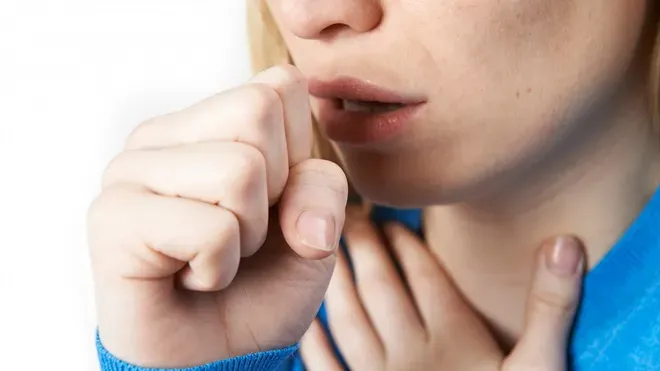Whooping cough cases are surging in Canada. What’s going on?
Quebec is seeing the biggest jump, surpassing pre-pandemic levels with more than 11,000 cases as of last week, while New Brunswick declared an outbreak on Aug. 22 with 141 cases — exceeding the five-year average.

Cases of whooping cough continue to rise across several provinces, and as children return to school, doctors and health-care professionals suggest multiple factors might be contributing to the increase.
Pertussis, commonly known as whooping cough, usually manifests 7 to 10 days after infection, starting with mild symptoms like a fever, runny nose, and cough. The Public Health Agency of Canada notes that these symptoms can develop into severe coughing fits lasting from two to ten weeks, according to the U.S. Centers for Disease Control and Prevention.
Quebec is experiencing the most significant surge, surpassing pre-pandemic levels with over 11,000 cases reported as of last week. New Brunswick declared an outbreak on August 22, with 141 cases, exceeding the five-year average.
The provinces of Quebec, Prince Edward Island, New Brunswick, and Newfoundland and Labrador have all reported case numbers exceeding peak levels seen before the COVID-19 pandemic. Alberta, Ontario, Nunavut, and British Columbia have also reported outbreaks this year. Between 2015 and 2019, an average of 3,000 pertussis cases were reported annually, a number already surpassed by over 12,000 cases this year, according to PHAC.
Dr. Isaac Bogoch, an infectious diseases specialist at Toronto General Hospital, suggests that limited vaccination access might be a contributing factor.
“Some individuals might not have access to vaccines through their family doctor or public health clinics,” Bogoch said. “Others may choose not to vaccinate, and some might have missed doses due to COVID-19 disruptions in healthcare.”
The World Health Organization reported in 2021 that 3.5 million children worldwide missed their first dose of the vaccine.
However, the surge in cases may not solely be due to lack of vaccination.
Bogoch and other experts highlight several potential factors.
“Part of the increase might be related to the natural cycle of the infection, where outbreaks occur every five or six years,” Bogoch explained. “Lower vaccine rates and waning immunity over time could also be contributing factors.”
He advises doctors to be vigilant for cases with prolonged or severe coughs, as early detection and testing can help manage the infection and prevent its spread.
Dr. Anna Banerji, a pediatric infectious disease specialist in Toronto, noted that while the vaccine is generally effective, immunity can decrease over time.
“The vaccine formulation has evolved over the years,” Banerji said. “It’s crucial to ensure that children returning to school have their vaccinations up to date.”
Routine immunizations are typically given at two, four, six, and 12 to 23 months of age, with booster doses between four and six years and again at 14 to 16 years. As of last week, 34 percent of Quebec’s cases were among those aged 10 to 14.
Dr. Earl Rubin, a pediatric infectious disease specialist in Montreal, emphasized the importance of vaccinating pregnant women in their third trimester to protect newborns.
“Vaccination during pregnancy helps mothers develop antibodies against pertussis, which then cross the placenta to protect the newborn until they start their own vaccination series at two months,” Rubin explained.
He also recommended that adults consider getting a booster, as severe coughs can lead to rib fractures and muscle pain.
Changes in the whooping cough vaccine over the years may have influenced its effectiveness.
Before 1997, the combined diphtheria-tetanus-whole-cell pertussis vaccine was used, but it was replaced by an acellular pertussis vaccine. This switch led to a decline in pertussis incidence, but Rubin notes that the newer vaccine provides less long-lasting immunity.
The acellular vaccine, which has fewer adverse reactions compared to the whole-cell version, led to higher vaccination rates. However, its shorter duration of immunity has resulted in the need for more frequent boosters.
Studies have discussed whether the newer vaccine’s shorter protection could contribute to the resurgence of pertussis. An article in the journal Nature in September 2020 noted that less effective long-term protection from the DTaP vaccine might have allowed epidemic cycles to re-emerge.
A 2006 article in the Canadian Medical Association Journal also suggested that the acellular vaccines might require additional doses to maintain adequate immunity.
Medical experts emphasize that maintaining vaccination schedules with any available and approved vaccine is crucial.
Dr. Banerji anticipates that as children return to school and some remain under-vaccinated, the number of whooping cough cases might continue to rise.
“With kids going back to school and some not fully vaccinated, I expect the numbers to increase,” Banerji said. “We’ve already seen cases at four times the normal rate, and this could rise further as school resumes.”





